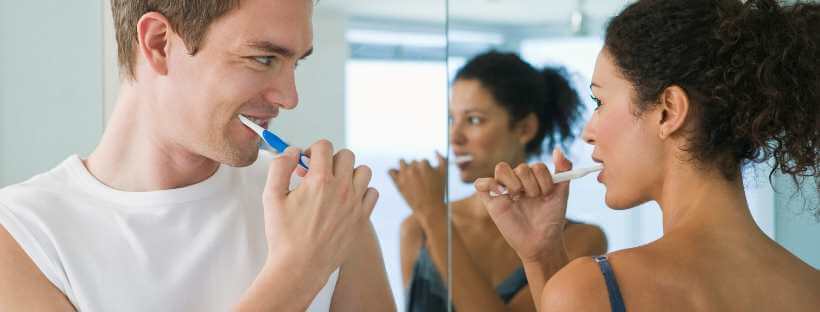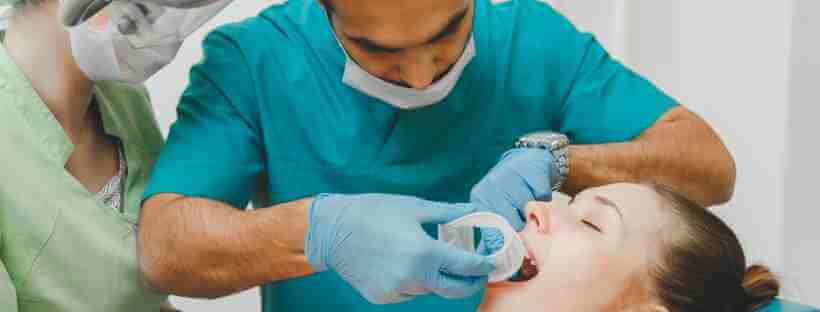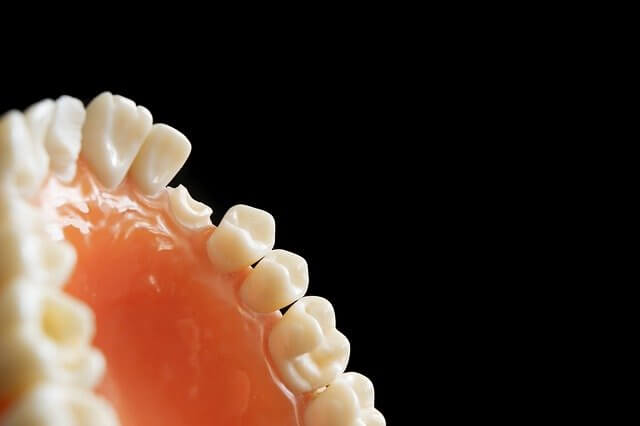To keep your teeth healthy, you have to brush your teeth everyday. It’s what we’ve learned since we were young and it’s what we teach our kids as well.
But how do you do it exactly? How do you brush your teeth properly?

There are studies that show the best ways to brush your teeth. If you’ve been visiting your dentist regularly, most likely you’ve been taught the proper way to do this.
But it’s not just about the techniques. There are several other factors you need to consider including the type of toothbrush and toothpaste. And in this article, we are going to go through each of them to ensure your healthiest smile possible.
Type of Toothbrush
Let’s start with what type of toothbrush you are using. This is an area many people are confused about. If you go to the store to pick out a new toothbrush, you may notice that there are different ‘strengths.’ These include very soft, soft, medium, and firm. The degree of firmness refers to the bristles of the brush.
A common misconception is that you need a firmer bristle to really get a deep-down clean. In reality, firmer bristles can harm your gums while bushing. Instead, using a medium or soft bristle can be the best purchase. If you visit your dentist regularly, he or she can instruct you as to what bristle firmness is ideal for your needs. Not everyone is the same, but generally, using a brush with softer bristles is highly recommended.
Toothbrush Brand
The brand of toothbrush, while we’ve been programmed to think one is better than the other, is irrelevant. What you should look for instead is the features included with the toothbrush. This may mean you will spend longer shopping for a toothbrush, but it will be well worth the time.
A basic toothbrush with same bristle size is something to avoid. There isn’t enough diversity with these bristles to reach below the gumline, rendering them less effective than other types of brushes on the market.
Choose a brush with a combination of different bristle sizes. Some may even come with soft plastic ‘bristles’ which are great for scraping below the gumline at the teeth.
Type of Toothpaste
Now that you have the perfect toothbrush picked out, you can move onto the right toothpaste. Here is another example of the company’s making it more difficult than it needs to be. If you were to go to the store and stare at all the options available for toothpaste, you would feel very overwhelmed. There are products for whitening, those for sensitive teeth, and those that claim to be a complete care toothpaste.
While toothpaste designed for sensitive teeth is a must for those with that problem, all the other ones usually confuse consumers. Whitening toothpaste will somewhat work, but it isn’t going to give you the best results as compared when you visit your dentist for a professional whitening treatment.
Instead, choose a toothpaste that has fluoride in it. Fluoride, as you know, is necessary to protect teeth from decay. If you’re on a budget and can’t afford the fancy brands, just choose one that has fluoride in the ingredient list.
Flossing
There are a few methods that work really well for getting the best all over clean, just as there are excellent methods of when to do things. For example, should you brush before flossing?
This can go either way, but to get the most of brushing and flossing, you should begin with flossing, brush, and then floss again. As long as you are doing the proper movements and techniques while handling your teeth, you aren’t going to hurt them.
If you find that your gums bleed when flossing, don’t panic. This is normal for those that don’t often floss. The more you floss, the problem should resolve on its own without any additional treatment. But if it persists, consult your dentist.
Rinse Mouth Before Brushing
Rinse your mouth first before you brush, instead of after. The rationale for this is that when you rinse after brushing, you are washing away all the good properties of your toothpaste. It would be almost as if you hadn’t applied any toothpaste to your teeth.
Also, rinsing is an excellent way to remove debris from the teeth, making brushing and flossing slightly easier. Gargle and rinse around the mouth for approximately a minute. Spit and then start brushing.
Brushing Techniques
When applying the toothpaste, many like to go overboard with the amount used. Contrary to popular belief, you don’t have to coat the entire toothbrush with the paste. A pea-size amount of toothpaste is all you need.
When you were young, you were probably instructed that the best way to brush your teeth is by doing a side to side, sawing motion. This was thought to clean under the gums and between teeth better than any other action possible. However, this is incredibly wrong. Brushing side to side is not the best way to clean between teeth or under the gumline.
Here’s where your mind is going to be blown. Instead of holding your toothbrush the way you are accustomed to -- horizontally -- do it vertically. Keeping your toothbrush up and down, move from side to side, using the up and down technique. This not only will help push plaque off your teeth systematically but is also gentler on your gums. When you go from side to side, like the traditional method, you will more than likely to injure your gums. This action is almost unavoidable. It is crucial to get below the gum line, but you shouldn’t be rubbing the surface of the gums as you clean.
Don’t rush through your brushing routine. Take the time to hit each individual tooth, not forgetting to go to the backside of the teeth as well. Many cavities start to form on the backside of teeth because these are often missed with brushing. The backside of teeth is also more prone to tartar buildup.
The molars are another area that is often missed because they are more challenging to get to. Make sure your brush goes behind the last molar and touches the back portion of the gumline. The same goes for how you floss the molars.

Brushing your teeth properly can prevent tooth decay and other serious dental problems. If you are in doubt whether you are doing it correctly or not, talk to your dentist. They should be able to direct you as to how best to clean and instruct you how to floss appropriately between each tooth. Some areas can be more complicated than others. For instance, those that have teeth that have almost no gap can be tricky to floss. But your dentist can direct you as to what products would work best given your situation
How to Brush Your Teeth Properly? was first seen on: https://soundviewfamilydental.com/
Soundview Family Dental
201 5th Ave S Suite 103, Edmonds, WA 98020
(425) 563-6360
Our Edmonds Location


No comments:
Post a Comment